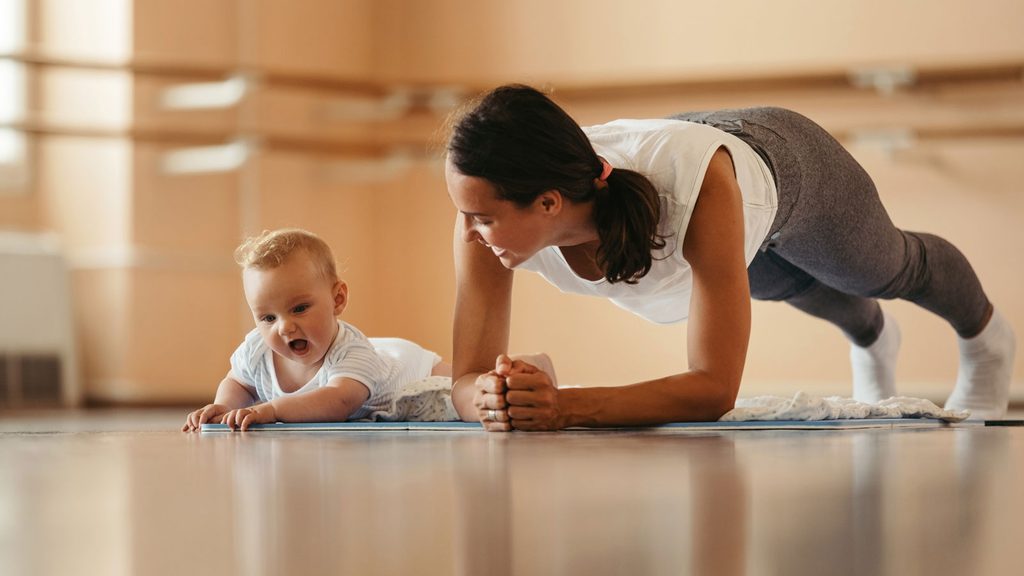This Is How Soon You Can Exercise After Giving Birth

Just had a baby and wondering how you can get back into working out? Peter Levidis, a certified athletic therapist, has your answer.
Now, let’s backtrack: For about 40 weeks, you carried an extra 20 to 60 pounds, 24 hours a day, seven days a week. This put a dramatic load on your lower and upper back, pelvis and hips. Your muscles and ligaments even changed accordingly to accommodate your baby. Then you went into labour, where contractions and pushes put further strain on those muscles and ligaments. You may have also experienced tears during the delivery. All of these factors helped to weaken and destabilize your body.
So, what can you do to offset that incredible strain on your body and get back into shape?
First, enlist the help of the pros. Start by discussing your goals with your gynecologist or physician and ask them for guidance in your recovery process. How soon you can start exercising depends on the details of your birth, such as whether it was a C-section and if there were complications, and should be discussed with your doctor. Once you’ve been given the OK to begin, I suggest consulting with a fitness professional who specializes in postpartum exercise. There are definite dos and don’ts that you need to follow, and this pro should be able to help you rebuild your strength safely.
As with pre-pregnancy fitness, your post-pregnancy exercise program should help you perform the six primal movement patterns: push, pull, twist, squat, bend and lunge. Those six movements will support you as you transition into parenthood, whether you’re pushing a stroller or squatting to pick up your little one off the floor. Remember to add about 20 to 30 minutes of cardiovascular exercise to the mix three or four times a week, too.
Your postpartum exercise program should include plenty of work for your abdominals, lower back and glutes to improve your midsection stability and pelvic floor strength, which may have been compromised. Speaking of pelvic floor strength, that’s where many women have issues post-pregnancy. Doing deep diaphragmatic breathing with full exhalation, learning to draw the belly button in and bracing the abs are key to strengthening your pelvic floor and avoiding any pro-lapse. Seeking out a pelvic floor therapist can help you strengthen this area further, if needed. (These yoga moves are also a great way to strengthen your pelvic floor.)
Another common issue with postpartum exercise? Diastasis recti.
This occurs when the abdominal muscles on either side of the belly, which separated to make room for the baby, don’t snap back immediately post-pregnancy and the extra pressure pushes the muscles forward, making it look like you’re still pregnant. Avoid the urge to do sit-ups and crunches to change this, as it will only increase pressure on your abs and make things worse. Instead, focus on bracing your core and learning to draw in your belly button during other exercises, such as squats.
Don’t forget about your mental health: Exercise is important for adjusting to the mental and emotional challenges of parenthood, too. It’s also great for enhancing your mood, and connecting with others in group fitness classes can go a long way for moral support and accountability from others in a similar situation.
Make your return to the gym something to look forward to because it will make you stronger and more capable of the physical and mental tasks that you will face as a parent every day.
Peter Levidis is a certified athletic therapist at Sport Specialists.
Next, read up on the healthiest foods to eat during pregnancy.




